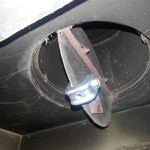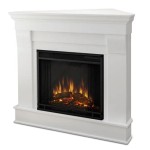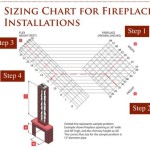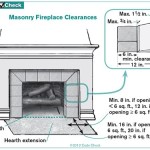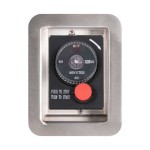```html
See-Through Fireplace Gas: A Comprehensive Overview
A see-through, or double-sided, gas fireplace offers a unique aesthetic appeal, allowing the ambiance of a fire to be enjoyed from two separate rooms. This design feature presents numerous advantages and considerations for homeowners seeking to enhance the visual appeal and functionality of their living spaces. This article will delve into the various aspects of see-through gas fireplaces, including their design considerations, installation requirements, safety features, and maintenance needs.
The core concept of a see-through fireplace revolves around the shared viewing area between two rooms. Instead of a traditional fireplace that faces only one direction, the firebox is open on both sides, typically separated by a pane of tempered glass. This design allows the flame and the overall visual experience to be shared, creating a focal point that connects distinct areas of a home. This can be particularly effective in open-concept homes, where the fireplace can act as a subtle divider while maintaining a sense of spaciousness.
The appeal of a see-through gas fireplace extends beyond its aesthetic value. It can also contribute to the energy efficiency of a home by providing supplemental heating to two separate areas simultaneously. While not typically intended as a primary heating source, the radiant heat emitted from the fireplace can help to reduce reliance on central heating systems, particularly during colder months. The use of gas as a fuel source also offers convenience, eliminating the need for wood storage and the associated mess.
Design Considerations and Installation
Installing a see-through gas fireplace requires careful planning and adherence to building codes and safety regulations. The structural integrity of the wall must be assessed to ensure it can support the weight of the fireplace unit. Furthermore, adequate ventilation is crucial to prevent the buildup of carbon monoxide and other harmful gases. Professional installation is strongly recommended, as it involves intricate gas line connections and venting procedures.
One of the initial considerations involves determining the placement of the fireplace. Ideally, it should be positioned in a location that maximizes its visual impact and facilitates the flow of traffic between the two rooms. The dimensions of the fireplace should also be carefully considered in relation to the size of the rooms it will serve. A fireplace that is too large or too small can disrupt the overall balance of the space.
Venting requirements are a critical aspect of the installation process. Gas fireplaces typically require either direct vent or B-vent systems. Direct vent systems draw combustion air from outside the home and exhaust flue gases directly outside, offering enhanced safety and efficiency. B-vent systems, on the other hand, rely on natural draft to exhaust flue gases, which requires a properly sized chimney or vent pipe. The choice of venting system will depend on the specific fireplace model and the existing infrastructure of the home.
Aesthetically, homeowners have a wide range of options to customize the appearance of their see-through gas fireplace. Fireplace surrounds can be constructed from various materials, including stone, brick, tile, and wood, allowing for seamless integration with the existing décor. The firebox itself can also be customized with different media, such as ceramic logs, glass beads, or river rocks, to create a unique visual effect. The selection of these elements should complement the overall style of the home and reflect the homeowner's personal preferences.
Furthermore, the framing surrounding the fireplace should be carefully considered. This framing not only provides structural support but also serves as a visual transition between the fireplace and the surrounding walls. The framing can be designed to be flush with the wall surface for a minimalist look or it can be more elaborate with decorative moldings and accents.
Safety Features and Operational Considerations
Safety is paramount when it comes to gas fireplaces. Modern see-through gas fireplaces are equipped with various safety features to mitigate potential risks. These features include flame sensors that automatically shut off the gas supply if the flame is extinguished, preventing the accumulation of unburned gas. Electronic ignition systems eliminate the need for a pilot light, reducing the risk of gas leaks and energy waste. Safety glass panels also prevent accidental contact with the hot firebox.
Regular inspections and maintenance are essential to ensure the safe and efficient operation of a see-through gas fireplace. It is recommended to have the fireplace inspected annually by a qualified technician. This inspection should include checking the gas line connections for leaks, cleaning the burner assembly, and inspecting the venting system for obstructions. Proper maintenance can help to prevent malfunctions and extend the lifespan of the fireplace.
Carbon monoxide detectors should be installed in the vicinity of the fireplace to provide an early warning in the event of a carbon monoxide leak. These detectors should be tested regularly to ensure they are functioning properly. Homeowners should also be aware of the symptoms of carbon monoxide poisoning, which include headache, dizziness, nausea, and shortness of breath.
The operation of a see-through gas fireplace is typically straightforward, involving the use of a remote control or wall switch to ignite the flame and adjust the flame height. Some models also offer programmable timers and thermostats, allowing for automated operation. It is important to familiarize oneself with the operating instructions provided by the manufacturer to ensure proper and safe use of the fireplace.
The gas supply to the fireplace should be shut off when the fireplace is not in use for extended periods. This can help to prevent accidental gas leaks and conserve energy. It is also advisable to keep flammable materials away from the fireplace to prevent the risk of fire.
Energy Efficiency and Environmental Impact
See-through gas fireplaces can contribute to energy efficiency, particularly when used as a supplemental heating source. Natural gas is a relatively clean-burning fuel compared to wood or propane, producing fewer emissions. The use of direct vent systems further enhances efficiency by minimizing heat loss and preventing the infiltration of outside air.
However, it is important to consider the overall energy consumption of the fireplace. Gas fireplaces consume energy even when not in use, particularly if they have a standing pilot light. Electronic ignition systems can help to reduce energy waste by eliminating the need for a pilot light. Homeowners can also opt for models with variable flame height controls to adjust the heat output and energy consumption according to their needs.
The environmental impact of gas fireplaces is also a factor to consider. While natural gas is a fossil fuel, it produces fewer greenhouse gas emissions than other fossil fuels, such as coal or oil. The use of renewable energy sources, such as solar or wind power, can further reduce the environmental footprint of a gas fireplace by offsetting the energy consumption associated with its operation.
Furthermore, the materials used in the construction of the fireplace can also impact its environmental footprint. Opting for fireplaces made from recycled or sustainable materials can help to minimize the environmental impact. Proper disposal of fireplace components at the end of their useful life is also important to prevent pollution and conserve resources.
The long-term cost of owning and operating a see-through gas fireplace includes the initial purchase price, installation costs, fuel costs, and maintenance expenses. While the initial investment may be higher than for other types of fireplaces, the convenience, aesthetic appeal, and potential energy savings can make it a worthwhile investment for many homeowners. Regular maintenance and responsible usage can help to minimize the long-term costs and maximize the benefits of a see-through gas fireplace.
```
See Thru Linear Gas Fireplaces Modern The Davinci Collection

Seattle 60 2 Sided See Through Fireplace Regency
Heat Glo Escape See Through Gas Fireplace Fireplaces Com

See Thru Linear Gas Fireplaces Modern The Davinci Collection

Rushmore 40 Inch See Through Direct Vent Fireplace Fine S Gas

Napoleon High Definition Series 39 Traditional Gas Fireplace See Thru Hd81int Hvac

Heat Glo Escape See Through Gas Fireplace Energy

Marquis Ii See Through Gas Fireplace By Majestic S Fireplaces

Napoleon See Through Gas Fireplace Ascent Multi View Bhd4 Hvacdirect Com

Heat Glo Foundation See Through Gas Fireplaces Advanced Chimney Systems




